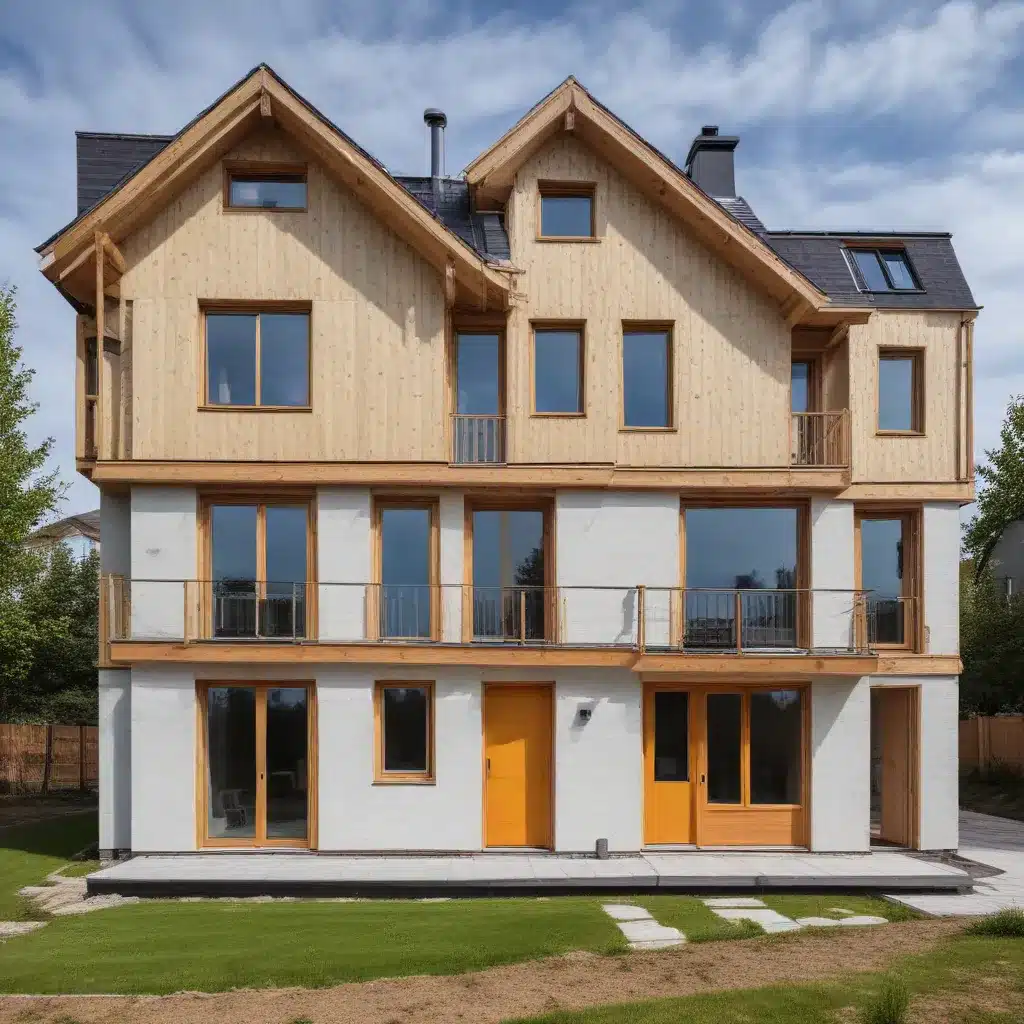
The future of sustainable architecture is being shaped by the rapid growth and evolution of the Passive House (Passivhaus) building standard. Originating in Germany in the 1980s, this pioneering approach to energy-efficient construction has gained global traction, inspiring architects, developers, and policymakers to rethink the way we design and build our built environment.
Passive House Principles and Requirements
At the heart of the Passive House standard are a set of rigorous design principles aimed at minimizing a building’s energy consumption while maintaining optimal indoor comfort. These include super-insulation, airtight construction, high-performance windows, thermal bridge-free design, and mechanical ventilation with heat recovery. To achieve Passive House certification, buildings must meet stringent thresholds for heating and cooling energy demand, primary energy use, and airtightness.
Benefits of Passive House Certification
The benefits of Passive House construction extend far beyond energy savings. These buildings demonstrate enhanced occupant comfort, improved indoor air quality, and greater resilience to climate change. By significantly reducing heating and cooling loads, Passive House projects can also help alleviate strain on regional energy grids, contributing to broader decarbonization efforts.
Challenges in Adoption
Despite its many advantages, the widespread adoption of Passive House standards faces several challenges. The higher upfront costs associated with specialized design and construction techniques can deter some developers. Regulatory barriers and a lack of familiarity with Passive House principles among local building officials can also hinder adoption, particularly in regions without established Passive House ecosystems.
Sustainable Architecture Adoption
The growing interest in Passive House construction is part of a larger shift towards more sustainable architecture. Across Europe and beyond, architects and designers are increasingly focused on reducing the environmental impact of the built environment through energy efficiency measures, material selection, and occupant-centric design.
Environmental Impact Reduction
By prioritizing energy efficiency, renewable energy integration, and circular economy principles, sustainable architecture aims to minimize a building’s carbon footprint across its entire lifecycle—from construction to operation to eventual repurposing or demolition. This holistic approach is crucial in the fight against climate change.
Energy Efficiency Measures
Beyond the Passive House standard, sustainable architecture employs a range of strategies to enhance energy performance, such as passive solar design, high-performance building envelopes, and smart automation systems. By optimizing a building’s orientation, massing, and envelope, designers can significantly reduce the need for mechanical heating and cooling.
Occupant Comfort and Health
Sustainable architecture also places a strong emphasis on occupant health and wellbeing. Design features like natural daylighting, improved indoor air quality, and access to green spaces can have a profound impact on the physical and mental health of building users, leading to increased productivity, reduced absenteeism, and enhanced quality of life.
Role of Passive House Standards
The Passive House standard has emerged as a powerful tool in the sustainable architecture toolkit, serving as a guiding framework for designers and builders to achieve high-performance, low-energy buildings.
Alignment with Sustainable Design
The Passive House approach aligns closely with the core principles of sustainable architecture, prioritizing energy efficiency, resource conservation, and occupant health. By demonstrating the viability of near-zero-energy buildings, Passive House projects set a new benchmark for sustainable design.
Influence on Building Codes and Policies
As the demand for sustainable buildings grows, Passive House standards are increasingly being integrated into building codes and policy frameworks across Europe. Several countries and municipalities have adopted Passive House as a mandatory requirement for new construction, driving widespread adoption and setting the stage for a more energy-efficient built environment.
Case Studies of Successful Implementation
From residential homes to commercial office buildings, Passive House projects around the world have showcased the performance and livability benefits of this approach. In the European Future Energy Forum, you can find case studies and examples of how Passive House principles have been successfully applied in diverse climates and contexts.
Driving Factors for Widespread Adoption
The future of Passive House and sustainable architecture more broadly will be shaped by several key factors, including public awareness and education, governmental incentives and policies, and industry collaboration and innovation.
Public Awareness and Education
As homeowners, tenants, and building occupants become more conscious of the environmental and health impacts of the built environment, the demand for sustainable, energy-efficient buildings will continue to grow. Effective public outreach and educational campaigns can help raise awareness and drive wider acceptance of Passive House standards.
Governmental Incentives and Policies
Supportive policies, such as energy efficiency mandates, carbon pricing, and construction subsidies, can provide the necessary financial and regulatory incentives to encourage the adoption of Passive House and other sustainable design principles. Governments play a crucial role in creating the conditions for widespread market transformation.
Industry Collaboration and Innovation
Collaboration among architects, engineers, developers, and policymakers is essential for advancing the Passive House movement. Ongoing research, development of new technologies, and the sharing of best practices will continue to improve the cost-effectiveness and performance of Passive House buildings, making them more accessible and appealing to a broader audience.
As the world grapples with the urgent challenges of climate change and resource depletion, the Passive House standard and the broader shift towards sustainable architecture offer a beacon of hope. By combining cutting-edge building science with a holistic approach to environmental stewardship, these innovative design principles are poised to shape the future of the built environment, creating healthier, more resilient, and more sustainable spaces for generations to come.







